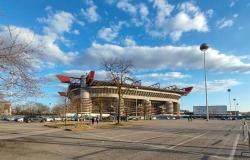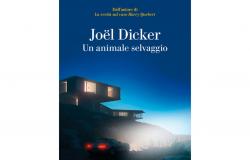«Abstract art is not a dogma, but a confession». Hanna Stirnemann wrote this in «Die Weltkunst» in December 1932, reviewing two exhibitions of the young painter Otto Hofmann, who had just graduated from the Bauhaus in Dessau. Clear. What the young art critic, later wife and mentor of Hofmann himself, as well as director of the Stadtmuseum in Jena – and the first woman to direct a museum in Germany – was referring to was the essentially subjective nature of signs and forms used in his abstract painting, according to the intuitions and precepts now properly developed by painters and theorists such as Klee and Kandinsky, and in antithesis with those ideas of a concretist orientation, postulated by Theo van Doesburg, for whom abstractionism was a mere manifestation of exact forms , measurable, exquisitely mathematical.
And it is no coincidence that Hofmann had attended the courses held by the two giants – Klee’s one on the primary formation of space, Kandinsky’s one on abstract elements and analytical drawing – which constituted a main pillar of the Bauhaus’ teaching program when, after his resignation of Walter Gropius, painting classes had gained a prevalent role to the detriment of artisan workshops.
Treating Hofmann as if he were none other than one of the many students of the Bauhaus, and slowly following the art of his masters, would however be an unforgivable mistake, and to reiterate this, fifteen years after the last major exhibition on the painter held in Italy, comes the exhibition Otto Hofmann European artist. Dal Bauhaus all’Italia, which can be visited at the Ragghianti Foundation in Lucca until 14 July, and has been double curated by Paolo Bolpagni, director of the Foundation, and Giovanni Battista Martini, since the nineties, the latter, a tenacious rediscoverer of the work of German abstract artist.
The Bauhaus therefore constitutes the primary environment in which Hofmann consolidates his awareness that so-called literary art has now had its day, and must give way to the language of abstract art, later defined as constructivist: it was a question of making visible a new spiritual sensitivity through a form with the one mysteriously connected. And the exhibition itinerary therefore begins between archive memorabilia – the notes taken in Klee and Kandinsky’s lessons, the diploma signed by Mies van der Rohe in 1931 -, rereadings of the research of the masters, including Oskar Schlemmer, and the attempts to define a more personal formal vocabulary and grammar.
Hofmann’s continuous updating on other abstract pictorial texts – with the contribution of his wife Hanna, suggests Bolpagni, cultured and, by profession, always up to date with new developments – led him from the 1930s to integrate his personal style by borrowing elements from compositions by international artists including Mirò, Arp, Léger, Tanguy, and compatriots, such as Willi Baumeister, always grafted onto a construction method of space based both on the dynamics of formal germination learned from Klee and on Kandinsky’s idea that shapes and colors create a field of psychoactive forces in the painting. At times, in some works, one can also sense a fascinating indecision towards the evidence of an external reality, usually an agglomeration of architecture, an urban landscape, almost caught in the middle of a process of distillation towards the abstract.
From 1933, Hofmann was involved in a chain of unfortunate vicissitudes, triggered by the rise to power of the Nazi party – which, let us remember, among its first measures ordered the closure of the Bauhaus. First attacked for his political positions, then his art was branded as an enterprising, degenerate, ours will be forced into years of a wandering and secluded existence, also to protect his wife, a Jew, from the racial laws. Finally, he will be co-opted into the Wehrmacht and sent to the front in France, Greece, Russia, where he will be a prisoner until the end of the conflict. Traces of imprisonment and war remain in some painful paintings, in a series of photographs of landscapes and cities, sometimes devastated, and in a selection of extraordinary painted letters addressed to friends and wife. «For me as a painter, these letters and these drawings», the artist would recall many years later, «constituted a sort of secret writing which is evidence of my intimate extraneousness to the war (…) for me there was no enemy that it was necessary to annihilate ».
Surprisingly, that mesmeric and curious intermittence oscillating between abstract language and figuration returns in these drawings which here becomes almost a meditation on how the formal sample he developed could adapt so well to translating those landscapes, made up of gutted and reduced buildings, into an abstract language. to expanses of incinerated stumps and debris, of spikes, splinters and sharp points. On the other hand, the Russian landscape, snow-covered, boundless, where the eye was lost, forced the artist to concentrate on the process of spiritual internalization.
If Nazism had banned his painting as degenerate, after the war the new government of the GDR opposed it because it was not realist, and therefore incompatible with the demands of clarity and legibility that art for the people should have, and Hofmann was forced to move West, living between Paris – where he met Alberto Magnelli, Michel Seuphor, and shared the studio with Alberto Giacometti -, Brussels, Cagnes, Munich and Berlin, the city where he taught between the sixties and seventies at the Hochschule für bildende Künst. His teaching activity, however, will still bear the mark of his training at the Bauhaus, just as the multidisciplinary approach passed on to him by the German institute will inevitably shape his attraction towards ceramic production, represented in the exhibition by some late Hutschenreuther-made porcelain .
His formal paraphernalia will continue to grow, a bulimic and insatiable curiosity, also attentive to research more distant from abstractionism, to the point of including surrealist or informal reverberations. It will be Liguria, and the city of Pompeiana in particular, that will constitute the retreat of the last twenty years of the painter’s life, opening his inventions to an unprecedented compositional balance of space, and to a clarity that would be difficult not to relate to the zenith light of the south.




